
Three months ago I was at Leica’s UK headquarters in Mayfair when the first two M-Ds arrived in the country. One was for display, the other had my name on it. I had anticipated its arrival and placed my order before anyone else caught a whiff of the cordite. To be honest, I bought it blind. Having tried the screen-free M60 edition at the end of 2014, I was ready for the M-D and I had a fairly shrewd idea that I would like it.
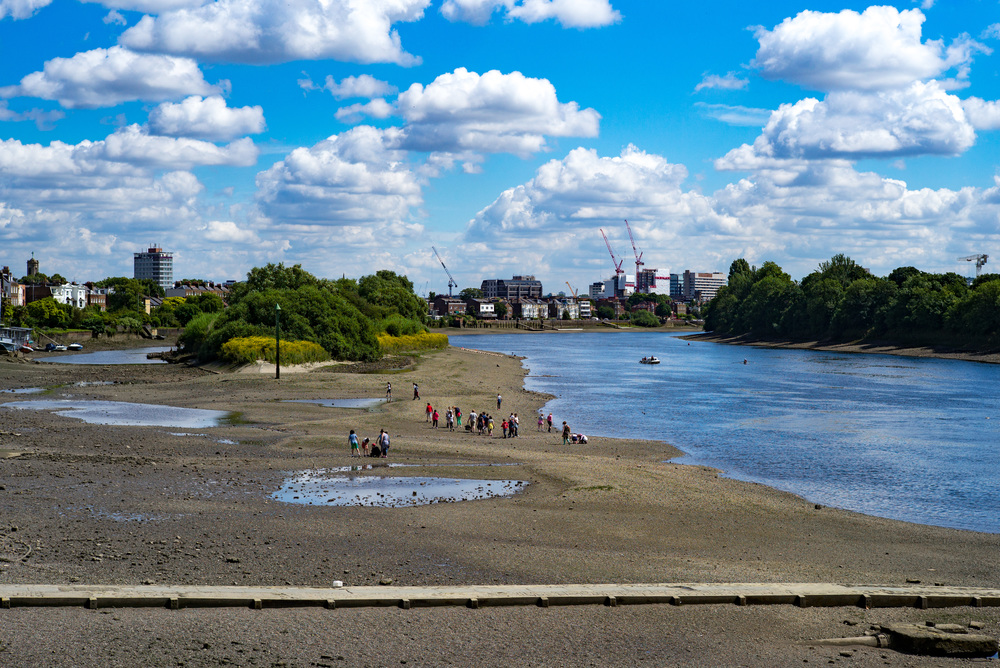
The concept of a device with a digital sensor but the simplicity of a film camera is somehow alluring. For several years the forums have been full of requests for a digital camera that looks and feels like an M3 (or M2/M4/M6, take your pick). The M-D may not feel exactly like the M3, but it does do a good job of emulating the experience, the added frippery of electronic metering notwithstanding. So far, I have not been disappointed. On the contrary, this is the best Leica M digital I have ever owned.
Since digital cameras began to make inroads into the film market in the early years of the century there has been a race to ever more features, ever more complication. We have had to accustom ourselves to computerised cameras with endless complications and options that, in my very modest opinion, actually detract from the experience of photography. At first, the opportunity of checking your shots on a screen made compelling sense. It was a new idea. And the ability to turn your camera into a mini darkroom, spewing out ready-to-go masterpieces without human intervention, was entertaining. At first.

Along the way, menus blossomed like the buds of May, buttons bred like flies and learning your way around a new camera became a daunting task. Some, such as Leica, tried to stay true to the shibboleth of simplicity. Fortunately, Leica menus, to this day, are a relatively simple affair. Other contenders expanded their menu offerings with more sections, sub-sections and a wide swathe of often conflicting terms. Recently, I turned to Olympus and, at least initially, found the menus mighty confusing, both to navigate and understand. They do grow on you, but slowly slowly. It takes time to create an ideal environment and, even then, there is always the possibility of upsetting things by pressing the wrong button.
Behind all this complication, though, lies a simple truth. You do not really need all these adjustments, options, buttons, dials, to make a good photograph. Nor did the masters of photography in the past. They didn’t juggle white balance, aspect ratio, sharpness, saturation, and a dozen and one other functions: They simply slapped in a film of a known sensitivity and took pictures using just three controls—aperture, shutter speed and focus. Everything else was done in the darkroom later—or, as we call it these days, the Lightroom.

Where the M-D fits in
This is where the M-D steps in. To my mind the M-D is the apotheosis of the rangefinder tradition. It is not trying to be all things to all men (as are so many modern cameras, including the other M digitals, even its stripped-down M262 sibling). It is focused on simplicity, on producing pictures with the same lack of fuss as any film camera since the dawn of the Barnack Leica.
I wrote my initial impressions of the M-D just three days after getting my grubby hands on the new arrival. It is now my only digital M. Gone are the M240 and M246, surplus to requirements. Reader Stephen Jenner is now enjoying my old M-P. The M-D is the most sublime and satisfying option and I feel that it is the digital M I will be happy to use for years. Despite a few extra grams and millimetres, this is the true descendant of all film Leica Ms over the years. It has the makings of a digital classic if such is a possibility. After all, there isn’t much to change apart from, perhaps, adding a few more megapixels (unnecessary in my view) or a faster processor (again, not a big wish). Wouldn’t it be wonderful, though, if such upgrades could be made to the original camera?
As such, the M-D has a strong appeal to those photographers who like the experience of shooting film—and the camera form that goes with it—but who are discouraged by the inconvenience and cost of processing.
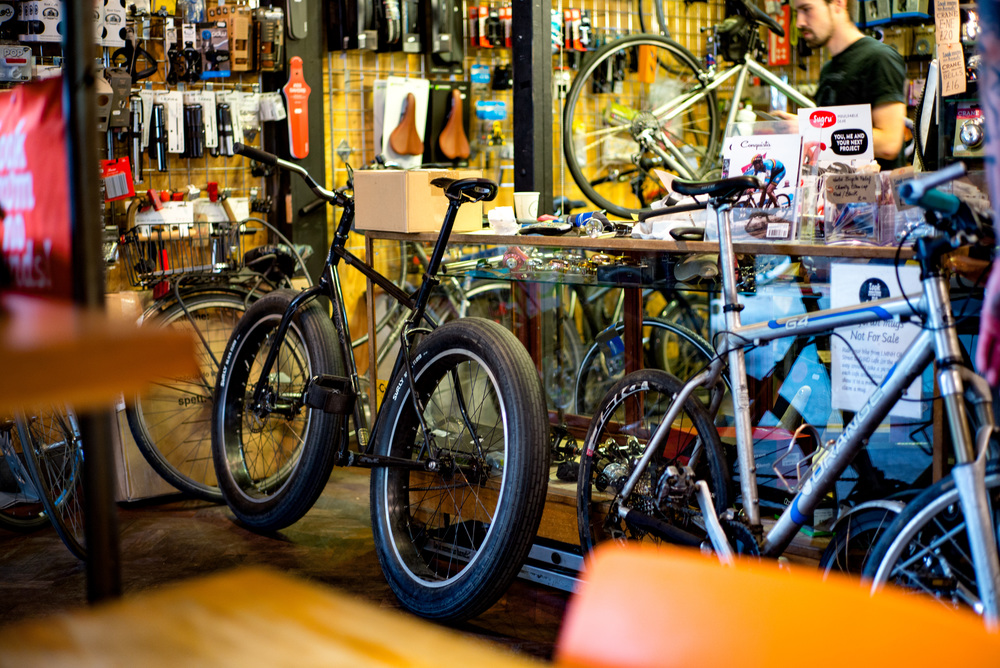
Design
From a styling point of view, the M-D adopts the clothing of the M-P, with the traditional white engraving on the top plate, the absence of a red dot to cover the rangefinder adjustment screw, the frameline adjustment lever (missing on the basic M240) and the matte black visage. Currently the M-D is available in black only, although Leica will almost certainly add a silver version sooner rather than later. It’s what they do.
In one respect it differs from other Ms. To the far end of the top plate, where the M240 and M-P mount the microphone, the M-D has a down step which is reminiscent of the M9. This in itself is a very subtle styling cue which makes the camera appear less bulky.
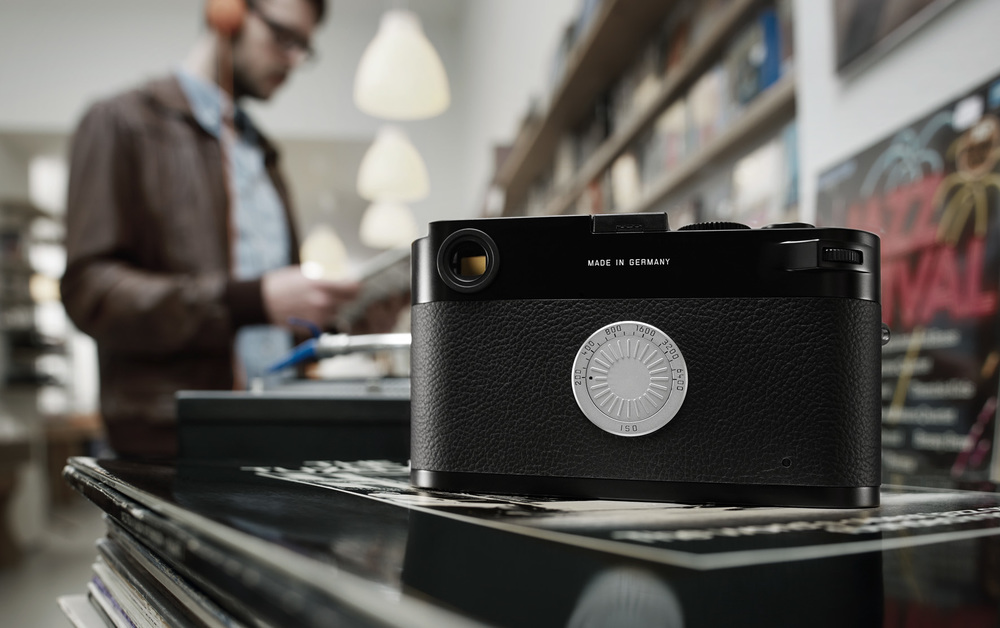
Internally, the M-D is pure M240. It has the same 24 MP sensor, the same processor and will produce exactly the same results. You have only my word that the pictures in this article have been taken with the M-D. I could have cheated and slipped in some tasty shots from the old M-P or, even, the Monochrom 246. Trust me, though.
However, unlike the M-P which has a 2GB memory, the M-D shares the 1GB buffer of the M240 and M262. Fewer shots can be written to disk before the buffer fills. Nonetheless, the M-D is a slow, purposeful device and hardly needs a bigger buffer.
All things considered, the M-D is a beautiful piece of craftsmanship, entirely traditional and full of purpose. I think it is the most handsome Leica digital ever made.

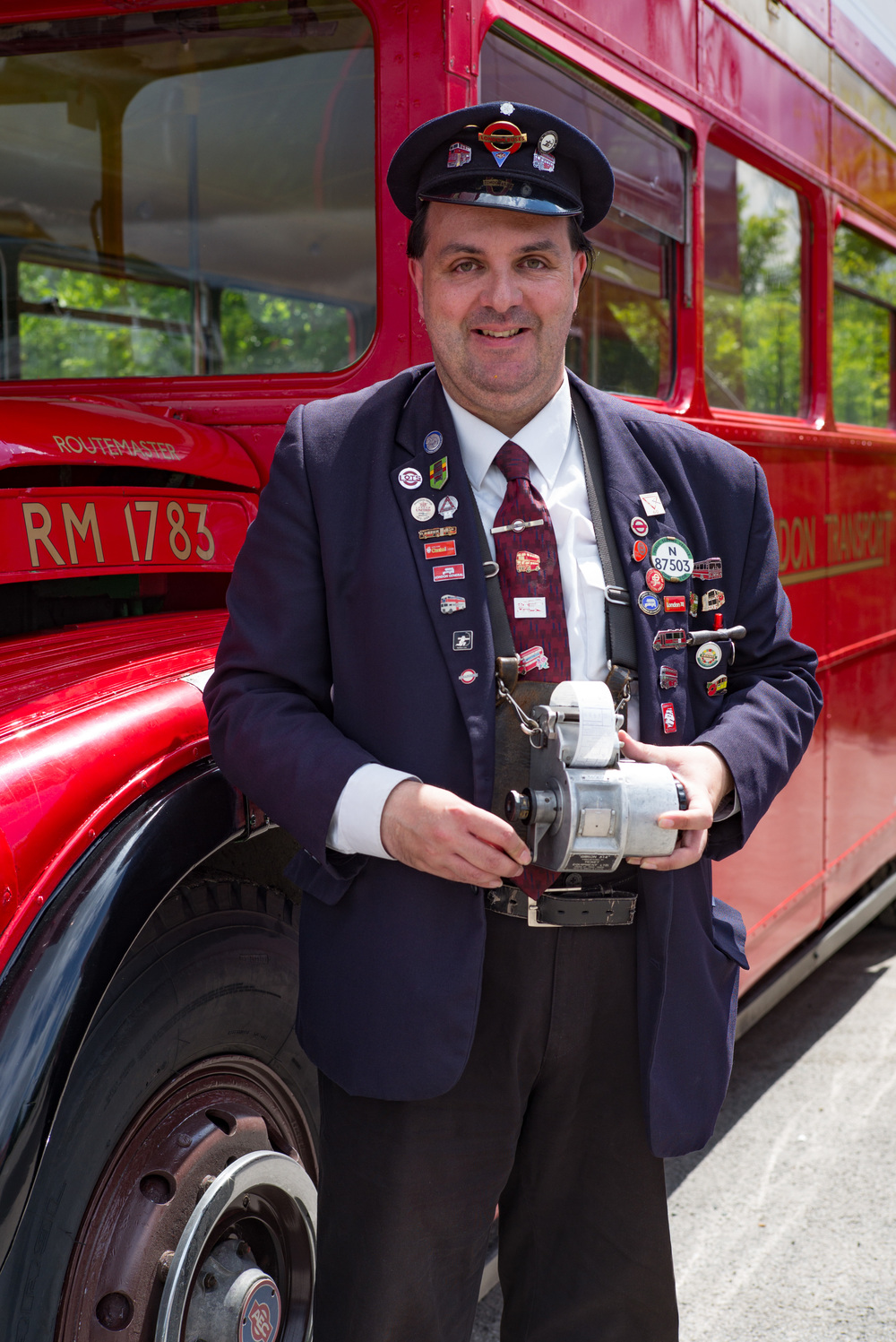
Controls
I’m tempted to be flippant. Controls? What controls?
With the M-D in my hands I feel completely focused on the taking of pictures. There is no danger that I’ve pressed the wrong button, perhaps by selecting +3 EV compensation by mistake; no chance of initiating video ’cause there ain’t any, silly.
No, I have a lens (any lens) with an aperture ring, a shutter speed dial that is most times set to A for auto, and a shutter button. That’s it, in the main. The only other option, apart from ISO, is the wheel to the right of the thumb rest. This is used to select exposure compensation (while simultaneously pressing the single function button). This works reliably and compensation is displayed in the viewfinder as you twiddle the dial. As an added safety precaution and as a reminder, the set compensation value briefly pops up in the viewfinder every time the shutter button is half pressed. You just need to keep your wits about you.
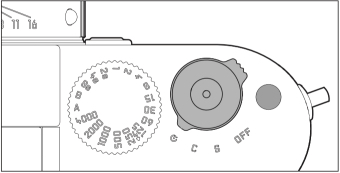
The final regular adjustment option on the camera is sensitivity. The ISO dial sits in the centre of the vulcanite back, just as the M gods ordained from time immemorial. Yet it is a welcome improvement on film Ms in that you can select a sensitivity for every single shot, not just for the next 36 frames in the film cassette. But that dial does bring a few teething problems for the new user. It is all too easy to crank ISO up to 1600 or even 6400 for an indoor shot and then forget to return it to 200 when emerging into daylight. Fortunately the camera warns of over exposure by flashing the maximum speed, 4000, in the viewfinder. Sometimes, however, a vital shot has been lost while fiddling with the dial. After three months, fortunately, I have accustomed myself to checking this setting. Of course, there is no auto ISO option as you can have on other M digitals.
The circular dial itself is fairly stiff and there is absolutely no chance of it moving of its own volition. Instead, you must exert firm finger pressure in the required direction of travel. Although many might consider this throwback dial a case of retro form over function, it actually works very well. It represents a simple analogue display which requires no electronic assistance. The dial is calibrated in one-third stops from ISO 200 to 6400 which is just about right for my type of use.
The M-D has exactly the same on/off switch, concentric with the shutter release, as all other Ms. It has four positions: Off, single-shot, continuous and timer. The front of the switch has a ridged tab that makes it easy to operate with the tip of the index finger. The shutter release is threaded for a mechanical remote or to accommodate a soft-release button such as the Matchtechnical bug which I have succeeded in losing. Last time I lost one, a bright red bug, it was missing for some weeks. Then, one day, I walked out of my home and spied it between two paving stones. I doubt I will find the black one in the same way. I think I’ll stick to the naked button.
Metering and focus
The M-D follows later film cameras in offering just one metering option—centre weighted. Again, nothing to choose, nothing to adjust. Just accept it and get on with it. I have always preferred centre-weighted exposure on Leicas, even on the M, so I have no problems with this approach. Similarly, I am perfectly happy with focus and recompose. It’s a method I try to adopt on all my cameras, even the Olympus PEN-F and the Leica SL. I have no use for floating focus points and it is just the way I like to work. Others may disagree. But, then, if you are in the market for the M-D you know all this.

The rangefinder focus method needs no introduction and, of course, operates in the same way as it has always done. I’ve always preferred manual focus, even though I use other cameras with extremely fast and very accurate autofocus. Manual focus is just so much involving; the deliberate lining up of the split image in the central focus patch, the knowledge that you are focusing on the precise face or point on the scene. And, once focus is achieved, it is then easy to recompose the shot without losing the setting. Modern cameras offer focus peaking, simulated split-image and other aids, yet none are as quick, or as satisfying, as the 85-year-old mechanical linkage system used on Leica’s cameras.
The bright viewfinder is more involving than even the best electronic views, and the framelines (which come in three pairs to suit 28, 35, 50, 75, 90 and 135mm lenses) make for quick and accurate framing. In common with the M240 series, the framelines are electronic—brighter than optical lines on earlier cameras but extinguished when the camera is switched off. Because of the lack of menus, the factory chose white framelines rather than offering the choice of white or red. Sensible decision.
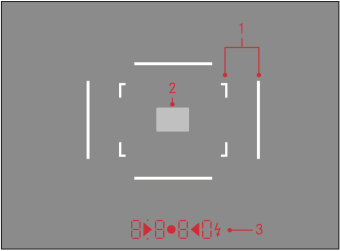
As a bonus for the rangefinder concept, when using 50mm and longer lenses, there is a significant border to the image which enables the photographer to see outside the box and be more aware of what is happening around. This is all standard M stuff and I mention it only for the benefit of any readers who are new to the M concept.
Since the camera came my way I have been using it mainly with 50mm glass—the needle-sharp APO Summicron ASPH and the silver Summicron I picked up at the Bièvres camera fair. As a result I dusted off the Leica 1.25x magnifier and screwed it into the viewfinder thread. It has two advantages. First, it magnifies the view so the 50mm frame is slightly larger; second it sits 9mm proud of the viewfinder and, with its rubber surround, is more comfortable for glasses wearers. It also helps when the camera is inside a leather half-case.
That missing screen
Apart from the paucity of controls, the most outstanding non feature of the M-D—and the one that gains most traction in tests and reviews—is the absence of a screen. This omission is often regarded as heresy. I don’t miss the screen, though. One advantage is that there is no temptation to chimp, but this is a minor consideration. The M-D operates as does a film camera. Yet even when I am using a fully featured camera such as the Leica SL or Olympus PEN-F, I seldom chimp. In fact, with the Olympus, I have the screen turned round so all I see (and, more important, feel) is an expanse of M-like faux vulcanite.
With the PEN-F, as with other modern cameras, this affectation of switching off or hiding the screen is a deliberate choice. The M-D, on the other hand, offers no such choice. The lack of a screen means no menus. Everything has to be done by means of juggling one button (the one that on the M240 starts and stops the much-disliked video function) and squinting at red digits in the rangefinder window. It sounds daunting, bordering on the fussy, but all options have been distilled to the absolutely essential. This is indeed a Spartan camera. Since the M-D produces only RAW files there is no need for all those jpeg-related settings. There are just three things you can do with that options button. During shooting, it is used to toggle between battery level (shown as a percentage digit in the viewfinder) and remaining shots on the SD card. Battery level flashes every time you switch on the camera so, essentially, I seldom need to touch the option button.
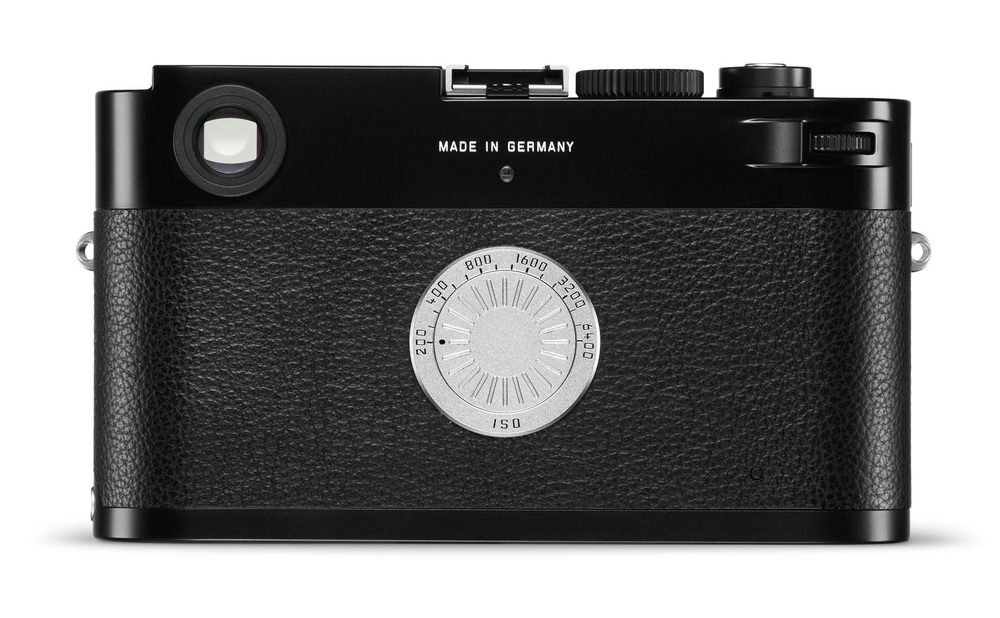
On very infrequent occasions, however, with a firm press or a simultaneous switch of the on/off button to the timer setting, the option button can serve to initiate firmware upgrades or to enable the date to be set (the digits of the date are selected by means of the thumb wheel). While all this is unwieldy to explain, it is simplicity itself once you’ve spent ten minutes familiarising yourself with the camera.
Not everyone is convinced. How can I possibly rely on this camera without being able to see the results on the screen? What if there’s something wrong with the settings and all my day’s work is ruined? As with a film camera, there is always the possibility of something unexpected, but a complete burnout is about as likely as erasing your SD card in error or mistakenly leaving the exposure compensation on +3. In the real world these things don’t happen often; and there are actually more opportunities to mess things up with a fully-featured camera than there are with the M-D. This is especially so with in-camera jpegs if you are relying on a dozen settings to be in harmony and which can be knocked out of kilter by all those pesky little buttons, dials and D pads.
The M-D is so simple that nothing is likely to happen by mistake. Even if you forget to put in an SD card the camera will tell you (“Sd” in red letters in the viewfinder). There’s nothing else you can get disastrously wrong except forgetting to set the ISO and that’s something that you remember to check frequently after a few weeks.
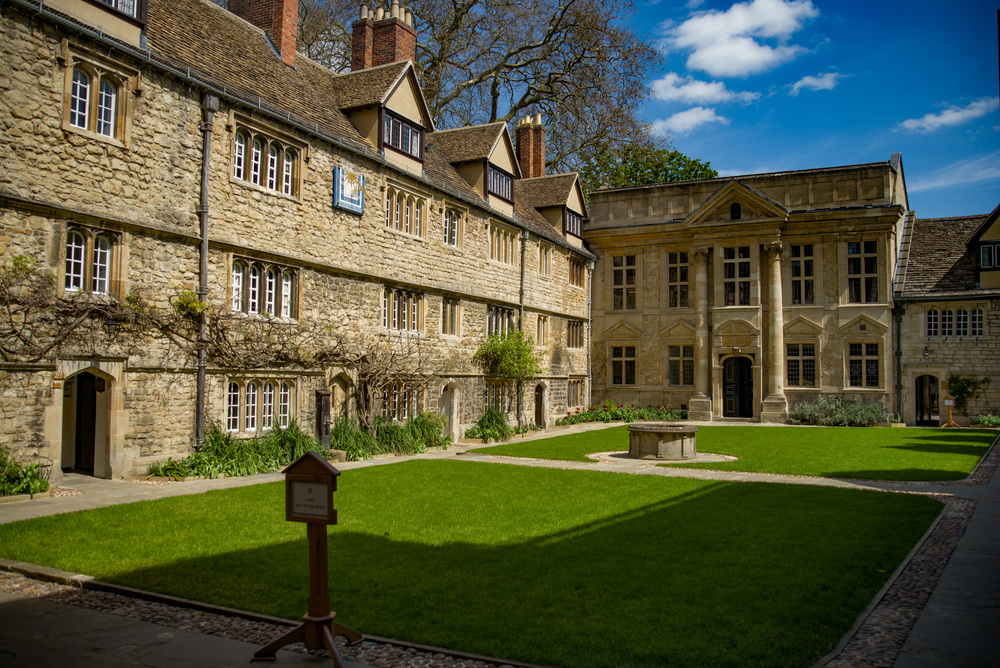
Handling
The M-D is actually a very simple camera to review. Some 80 percent of the tick boxes that clutter a normal camera test are completely redundant. There is little difference between reviewing the M-D and the latest M7 film camera. It just works and there are no variables to consider.
The M-D feels very solid and compact in the hands. While it has the same dimensions and weight as the M240, it is subjectively slightly smaller and lighter. I can’t really account for this, although the absence of a screen and surrounding buttons offers a more tactile cruising ground for the right thumb and makes the body more graspable. The camera feels more M7 than M-P; and this is a good thing.
Over the past couple of weeks I have had my M-D snug inside a £165 black leather Classic Case, hand crafted by Paul Glendell in his Bovey Tracey hideaway. I worked with Paul on the detail of this case and I have to say that it perfectly complements the M-D. I had promised that I would not use half cases in future, resolving not to mollycoddle my cameras. But I have to admit that the Classic Case looks the part and helps improve the grip on the camera. I suspect a light or dark brown leather would look even more attractive.
As a further aid to firm grip I mounted the Matchtechnical Thumbs Up designed for all M240-series cameras. It is a relict of my M-P and M246 and is now nicely brassed. The grip helps in keeping the camera steady during shooting. It also provides a comfortable thumb hook for use when carrying the camera on a wrist strap.
If you can use an M7 you are due no surprises when picking up the M-D. It is essentially an M7 without the film. Swap the darkroom for the Lightroom and you have the full story. As with the M7, the M-D has the option to set automatic shutter speed which works in conjunction with the other two manual settings on the camera—aperture and ISO sensitivity. In this case the auto speed selected by the camera will appear as red digits in the viewfinder, something you need to keep an eye on to avoid an over-slow speed and the danger of camera shake. Alternatively, both speed and aperture can be set manually. In this case, you will see the same opposing triangles and central red spot as on the M7 (or the M6 TTL and MP for that matter). Simply adjust the speed or the aperture until the red dot is illuminated
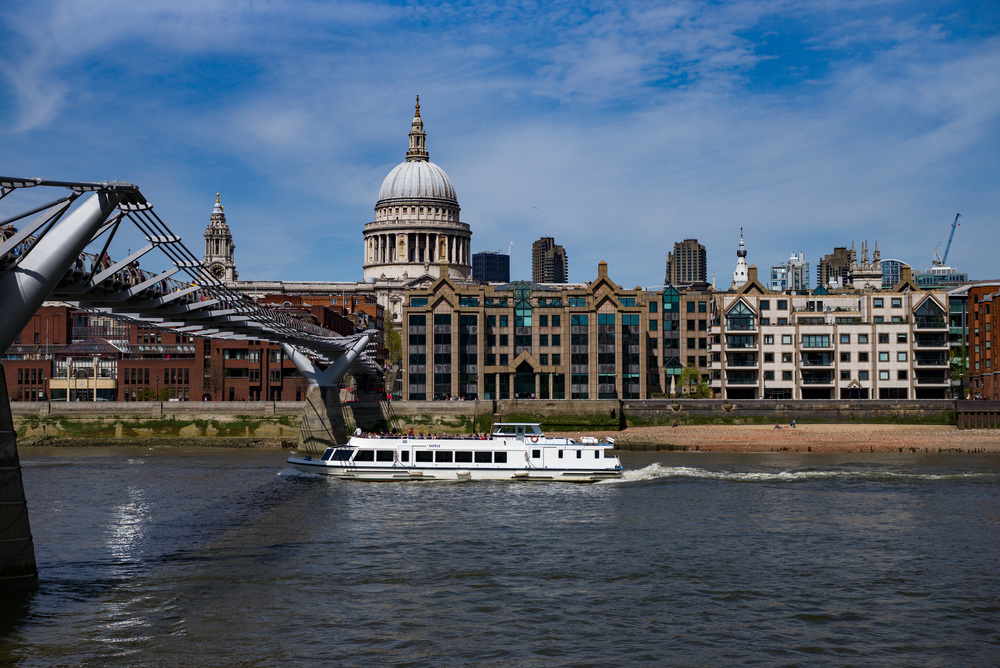
Some useful features have gone by the board. For instance, without a menu you cannot input metadata details such as user or copyright information. All that has to be done in post processing if required.
With no menu to twiddle there’s no way you can format your SD card in the M-D. However, this can be done using the popular SDFormatter software on your computer. It works well and solves another little problem. In any case, there is no need for frequent formatting. Simply delete the old shots from the card before removing it from the computer.
Yet another missing feature is the option to select a lens profile. The M-D recognises all six-bit-coded modern glass, but uncoded lenses are shown as “not specified” and, without a menu, there is no way of telling the camera what’s what. Again, if you often use uncoded lenses it’s a good plan to add keywords in post processing.
Despite these caveats, I don’t really miss all the complications. I am happy to revel in the simplicity of the M-D
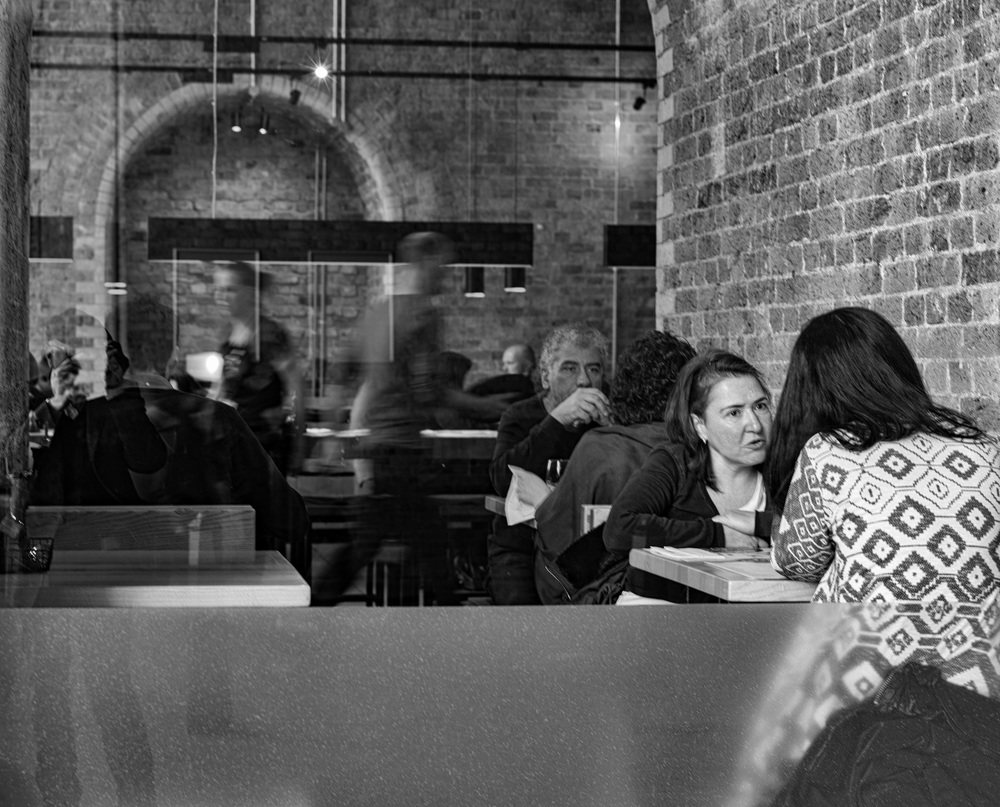
Battery life
Arranging for maximum battery life, though, has proved problematic. Initially, Leica delivered the M-D with automative power-off disabled. According to my informants, this was done in response to feedback from some users of the M60 Edition, the forerunner of the M-D. This camera would switch off after a few minutes and users complained that they would prefer a longer period of consciousness. The question was, just now long. Ten minutes? One hour? Since there is no way to perform this adjustment, neither on the M60 nor on the M-D, the gut reaction at the factory was simply to disable the power-off function altogether.
This proved to be a mistake. As an inveterate forgetter-to-switch-offer, I soon realised that the battery could flatten itself in a trice. Clearly Leica expected owners to switch off before periods of inactivity, something that I could not get used to.
Fortunately for all of us, the solution was easy. The recent firmware update permits the camera to shut down after 30 minutes. I have now been using the new firmware for around six weeks and can report absolutely no problems. In fact, the wake time is so quick, perhaps not even one second, that it is hardly noticeable. In any case, the M-D is possibly the quickest digital camera to be ready for action after being switched on.
Where battery life was a constant worry before the firmware upgrade, it is now something that I don’t think much about. The enormous battery, inherited from the M240 with its video and live-view capabilities, is a true bottomless pit when slotted into the newly firmwared M-D. Over the past two weeks I have been using the camera off and on, including one full half-day of shooting, and the battery level is still at 80%. I carry a spare, especially after the scary first few weeks with the M-D, but it probably isn’t necessary in normal circumstances.
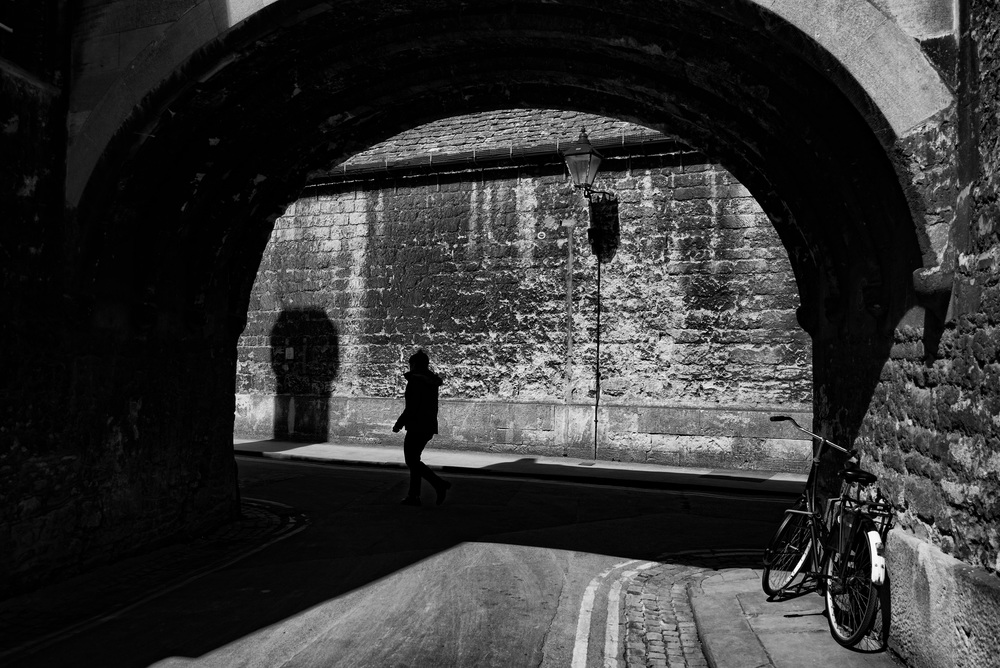
Conclusion
The M-D is not for everyone. I don’t see it as a starter camera, nor as an only option. Anyone bred on the typical modern digital will be flummoxed. And then some. It is being bought by people who have already owned M digitals and seek a fresh approach. Most of them have other cameras, maybe a Monochrom, perhaps an SL. Or, even, a Fuji, Sony or Olympus mirrorless camera. They can get their computer-game fix from these cameras, but not from the M-D.
My attraction to the M-D definitely lies in its stripped-down simplicity and purity of focus. I can fully understand the reasoning of photographers who still prefer the more fully featured M cameras. They are clearly more versatile and, as many will argue, you can turn off the screen, disable jpegs and set up a simple “holy trinity” metering regime. But it isn’t quite the same.
The M-D appeals to the purist. It is the distillation of the digital camera; a fine cognac that never fails to tickle the taste buds at every sip.
Did I say I like the Leica M-D?

_______________
-
Subscribe to Macfilos for free updates on articles as they are published. Read more here
-
Want to make a comment on this article but having problems? Please read this

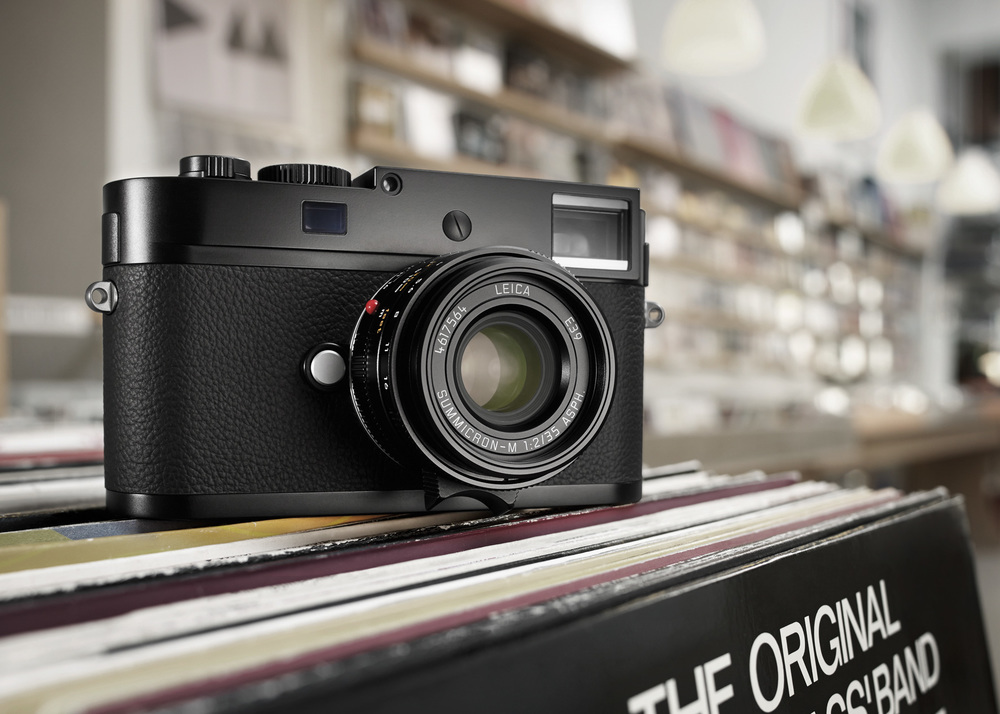
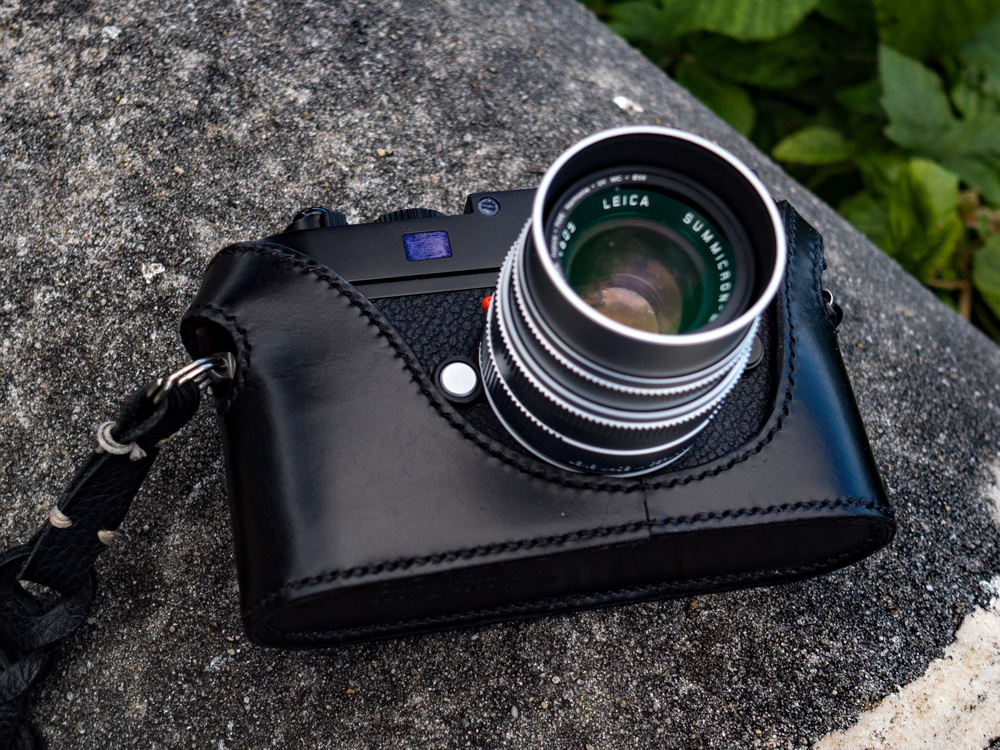
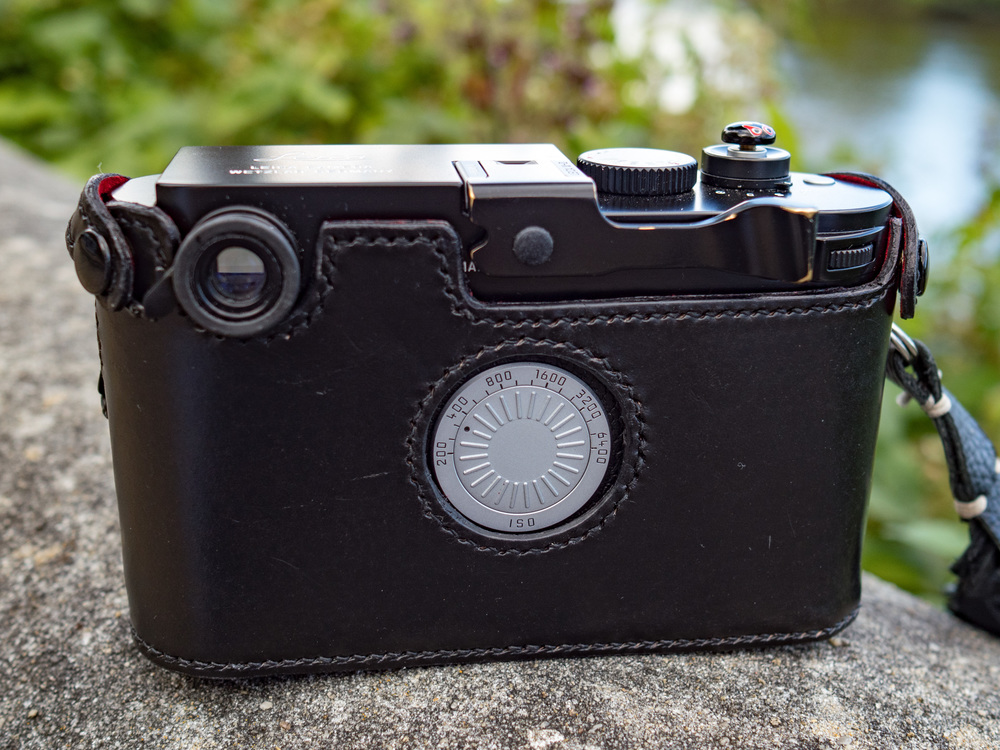

I had the M-D for about a year, then sold it (and my M9 Monochrom) to upgrade to the M10.
Well a year later and I’ve come home. The M10 is off to a happy new owner and I’m once again the proud owner of a like-new M-D and a like-new M9 Monochrom.
I really think this is the best digital Leica to date, and honestly even an M10-based version wouldn’t likely tempt me.
As I just wrote in answer to John Nicholson on the M10-P story, I loved the M-D and, in some respects, regretted selling it. I am definitely int he market for the M10-D when it arrives. At long last, it could be THE rangefinder to keep.
Most likely the M10-D, if it ever appears, will have the M10’s ISO dial, which is a HUGE step back from the delight of the big round dial on the back of the M-D 262.
Great review. I sold my M-E yesterday and my M-D should arrive tomorrow or the next day.
Andrew,
You will love the M-D. It just works. The only improvement I can envisage is the M10-D.
Thanks for the thoughtful and descriptive review. I am happy to say I acquired my M-D a little over a week ago and love it! It’s my first Leica (digital or otherwise) and, after deliberating whether to get a film or digital M, I opted to start with digital, with the hope of adding a film body later on. I originally had decided on the M-P, but the more I read about the M-D, the more intrigued I became and, ultimately, handling one in person "sealed the deal," so to speak. I grew up on Canon film cameras and have been shooting with a Canon 5D Mark II DSLR for the past six years, but the simplicity and lack of features (including the LCD screen) just seem right for my first foray into rangefinder photography, especially with a Leica!
One question I have is regarding the file numbering of images on the SD card. Is there any way to reset it? Reformatting the card doesn’t seem to do the trick and I have been unable to find any documentation on this in the M-D users manual or elsewhere.
Sean
Congratulations, I’m sure you will be happy with the M-D. The ability to change the filename (ie changing L to MD or whatever) and changing the sequence is one of the casualties of the minimal interface. I should have mentioned this. But, since it hasn’t been raised before, I will check with Leica and post any new information here.
Thanks! And thanks for checking with Leica on the image numbering. It’s certainly a minor "casualty" of the minimal interface (and one I can live with), but it might be nice to have the ability to start fresh when going on a trip, for example. I also checked the M 60 users manual, since I figured if such an option exists, it would be the same as that model, but alas, there’s no mention of it there either.
Also, these are great shots you posted with the review! They help confirm my conviction that my next lens should be a 50mm (though maybe not the APO, which is quite pricey). I’m leaning toward the Summilux f/1.4, which I think will be a nice addition to the Summicron 35mm f2 I purchased with the M-D.
Sean
I believe you can reset the numbering on the M240 but I don’t have one in front of me to check. I’ve never considered resetting (as you suggest, for instance, at the start of a trip). It doesn’t worry me. The only think I like to do is change the standard L prefix for something that identifies the camera. Again, though, none of this is essential.
I confess I am a bit of a 50mm fan and have a number of different lenses. The Summilux is a great lens and, in most respects, I prefer it to the bulky Noctilux. Like the Noctilus, though, it can be a bugger to focus wide open and, in this respect, it works better on the SL or any other EVF-equipped camera. The focus ring on the Summilux is a little heavier than on the ‘Crons because it has to move more glass.
That said, the Summilux is one of my favourites. It is a little heavier than the Summicron but, in general, the Summicron or Apo-Summicron are good all-rounders. I’m quite happy with f/2 most of the time. One thing to bear in mind is that the current Summicron does not have a focus tab (something I like) whereas there is one on the Summilux. Avoid the silver anodised versions because of the extra weight–unless you are addicted to the idea.
Another difference worth mentioning is that the Summicron has a push-pull hood which continually gets knocked back. The Summilux has a later design with a pull-and-twist motion which helps lock the hood open. The Apo-Summicron has the latest design, a sort of screw motion which twists to open and tends to remain in place.
It’s worth visiting a dealer and trying all these lenses for ergonomics.
I think I read somewhere that you can reset the numbering on the 240 via the menus. Again, not a big deal, but I’m curious if you’ve heard back from Leica about doing this on the M-D.
Also, thanks for info on the 50mm varieties. The APO looks fantastic, but it’s hard to justify double the cost of the Summilux (esp. since it’s one stop slower). Luckily, I live right around the corner of the Leica dealer in Washington, D.C., so I do have that option.
I think you are right on the ability to reset the numbering on the M240. It’s something I’ve never needed to do. I’ve not even considered it when buying a used camera–I just carry on where the previous owner left off. I’m not to hung up on the numbering, although I do like to change the prefix.
You are certainly centrally situated in DC. I’ve visited that store quite a few times.
This is the reply I received from Jenny at Leica UK who had spoken with the Product Manager in Germany:
Hi Mike
The product manager said that there is no function to reset the image numbering.
He did also say that file numbering will be reset if you reset the camera and insert a blank SD card, which would be the same for any camera, I presume?
Sorry – it was just a very quick reply as he was extremely busy.
Many thanks,
Jenny
Thanks, Mike, for sharing the response to my question from Jenny at Leica (and for asking her).
Sean
Thanks, Sean.
Leica has acknowledged my query about file number resetting and will come back to me shortly.
Thanks for the review Mike. I was Possibly the second earliest UK adopter after you, having snapped up RDC’s first camera. I love mine dearly; a very different shooting experience and much more measured. Combined with the appropriate DNG-compatible EyeFi card, I can look at the fruits of my labours on my iPad when stopping for a coffee or beer. This of course in no way changes the purity of the M-D shooting experience. Perfect!
John
Thank you for a thorough and interesting review, Mike.
I also love my MD and it’s become an absolute keeper for me. You’re right though – it’s not just about the inability to chimp but the fact that the camera focuses your mind on the essentials of achieving a good exposure. The absence of a screen also makes for a very tactile camera that is a pleasure to hold and use. Digital cameras, even M’s, never feel right in the hand with that shiny, smudge prone glass screen.
My chief photographic muse is my Monochrom. Now, I would love to see an MD/Monochrom with no back screen and just an ISO dial. That would be the perfect camera for me.
David
David
I thoroughly agree with you, David. The Monochrom is crying out for the M-D treatment. The screen on the Mk I Monochrom is so bad that it hardly warrants being there. But, as you say, the feel of the smooth back is such an improvement on the screen and clutter of buttons.
Well put Mike—I feel the same way about my M60.
John Reynolds
Fascinating review, Mike. Thank you. This is so nearly the digital Leica that would have kept me with the marque instead of defecting to Fuji as I did. But… The X System is so much more flexible, and suited to my personal needs.
I say "so nearly" for two reasons. First, the thickness of the body. Others have been able to produce a thinner body with a full frame sensor so Leica really has no excuse. The "middle age spread" seen since the M8 is simply not for me.
Secondly, for a time I had an Epson R-D1s. It managed the feat of being "retro" in handling without simultaneously donning a hair shirt. The rear screen could be rotated through 180 degrees so that the back of the camera was blank. It also had a small LCD display on the top plate for (from memory) the number of frames remaining and battery status. In short it blended tech. with trad. and did it in such a way that worked. I can’t help but feel that Leica are solving a problem here that misses the point of what people mean when they hanker for the designs of the past.
Bill, there is a number of factors governing the body thickness. First, I do suspect there are savings in thickness to be made, but not dramatically so. The Sony A7 does have a thinner body but the difference is made up by the collar around the lens mount. I doubt that it would be possible to add a similar collar to the M rangefinder because of the linkage and the need for backward compatibility. However, there are possibilities to slim down the entire M range because of continuing miniaturisation of electronic components, slimming of the sensor unit and suchlike.
Finally, the size of the current M-D is dictated by simple economics. It would not be possible to design a thinner body and undergo the cost of tooling simply for what is, after all, an unknown sales quantity. If a new body is being designed for the next M, which I hope, then this would percolate down to a future M-D.
When I spoke to Stefan Daniel about 18 months ago he made it quite clear that the ultimate objective is to produce a digital M with broadly the same dimensions as the original M3. We will just have to wait!
Excellent pictures Mike and greetings…
I agree with everything that you say about the M-D and I wanted one myself, until I saw the price.
So in my view you forgot to mention the best thing about the M-D, which is that I managed to acquire from you at a very good price, a pretty much mint M-P.
I use it in the same way as you would use the M-D Mike:
I keep the rear screen turned off, I only make raw files, I do not use any of the additional features that were supplied with this camera, except (accidentally) the extra GB of ram…
… I was on Valentia island and my camera was switched on to position ‘S’, but for some reason I thought that it was off, so I turned the switch once more to ‘C’ and took about a million (exaggeration) pictures of the waves crashing onto the rocks, and the camera did not stop.
But anyway I also have, should I need them… video (yuk), a chimp window (rarely), and live view (not so far)…
… I can think of a good use for the LV, namely a lens like my Minolta Rokkor f2 40mm (a superb lens) which brings up the 50mm frame-lines but is nearer to the 35mm lines and actually 40mm for which no frame-lines exist. In my view, this lens is too easily dismissed, it is a pity that Leica do not make a modern version, it is superb in portrait and landscape… As a ‘standard’ lens, if not perfect, it is certainly ‘good enough’!
Stephen J.
Dear Stephen
I’m glad to hear my old M-P is behaving itself impeccably (as it should). I think you made the right choice, certainly from a price point of view. For my part, having tried all the modern M cameras, the M-D is something special. I do appreciate the frameline problem with odd focal-length lenses but it isn’t something I have worried about so far.
Thanks Mike, yes I forgot to add that the LV might have a use, with or without the EVF, when using say a 40mm lens for something where accurate framing was vital, like document copying or something of that kind…
… I just leapt to the punch line… Which is that in more or less every case…
The rangefinder coupled OVF is ‘good enough’.
Stephen J.
I get the concept as I use it all the time with my film cameras. I will certainly take a look if and when Leica update the M, with, hopefully, better design and handling than the 240/262 cameras. I might still go for a version with a back screen, though. I don’t perceive any of the current Leica digital models as collector’s items. Some of them might be in the long term, though. What the M-D has going for it is that it is a ‘first’.
William
Wonderful photos as usual Mike. I have all film Ms, with the sole exception of the M6TTL, and virtually all LTM models from the mid 1920s to the late 1950s. I also have the M8, M9 and M240. I might, therefore, be considered part of the target market for the M-D. I will try below to explain as briefly as possibly why I would not buy this camera.
This is not a digital M3 as it is effectively an M240 with some features removed. Whereas the former is beautifully made and lovely to use with very simple and slick handling, the M240 feels bloated and clunky by comparison.
Digital exposures are more like transparency exposures than ones made on film and are very sensitive to over and under exposure. Using centre weighted metering on the M240 often requires exposure compensation- the meter is very sensitive. I absolutely hate the exposure compensation thumbwheel on the M240- BTW you don’t have to press the front function button-somebody told me how to adjust this on these pages. For me, the exposure compensation dial on the X-Pro 2 is perfect (I use it looking down and not with the camera to my eye) and I hope that Leica follows this in the next M but I fear that they will not do this as minimal external design is the order of the day in Wetzlar- basically style over substance. Leica have, of course, used this system on the D-Lux, but that is, basically, a Lumix copy.
As the exposure on the M series is sensitive, I cannot see why one would want to be without a rear screen to check the exposure, when it is possible to have one. I am with you all of the way, though, on menus etc. I rarely read camera manuals and I stay away from menus. Using menus is either a failure of the photographer or the camera, sometimes both. I have no time either for joysticks or touch screens etc which are basically just for games playing youths with a lot of digital dexterity. I am slow and clumsy and I like slow and precise adjustments which work for me.
That is it in a nutshell. I am in no doubt that the M-D is a lovely camera and you get outstanding results from it but it is not for me. I still continue to use my film Ms and LTM models and get great enjoyment from them.
William
William, thanks for your positive comment. I fully appreciate your view and reservations about the ultimate desirability of the M-D. As I said, it is a niche product and not for everyone. But I know from the many discussions I’ve had with Leica owners and non-owners that there’s a certain allure in the concept. I don’t see it replacing the M240 or M-P for I feel that it gives me all the rangefinder I need. It looks gorgeous, too!